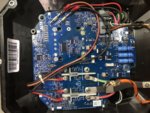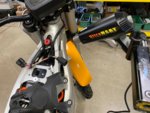Of all the faults a HV Isolation errors is probably the most concerning (from a potential shock hazard standpoint). Alta decided that a high voltage system (above 100v or so) was the best way to go and I agree. However, HV does come with human safety risks that most low voltage system don't have. To minimize this risk Alta designed in LOTs of isolation circuitry wherever HV and LV systems must interact. In addition, Alta incorporated various monitoring circuitry to keep an eye out for potential "leaks" between these systems by sensing the voltages across them. And although the sensing circuits alone constitute a voltage leak the resistances (megaohms) is so high the current flow is almost negligible so essentially there's no electrical connection. However, water or humidity (just about anywhere), certain component failures, and a few other modes can indeed create sneak paths and result in a HV isolation fault. Since the Inverter, BCU, BRDs, and DCCP all contain both HV and LV interacting circuits they are all monitored. I believe the "industry standard" for "low Isolation" is around 2 megaohms. I think Alta starts giving warnings around 3 megaohms and is happy at 4 or above. So, having said all that I'd say check the actual reading when you get Multitool fired up. In other words, 2 megs isn't anything of safety concern but it's an indicator that somethings not right and a catastrophic short circuit could happen eventually. One of the problems with having so many safeguards (like Alta) is that the possibility for false alarms/and or failures of the monitoring/measuring circuits themselves as opposed to the primary circuitry.


